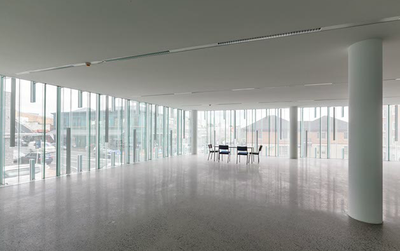Week 12 - Materials
5. The Natural Step
5.4. Occupant health
 As well as the use of resources and waste production, a sustainable building should be able to "sustain" its occupant in terms of occupant health. Poor Indoor quality has been linked to illnesses such as sick building syndrome (SBS), building related illnesses (BRI) and multiple chemical sensitivity (MCS). Follow this link for further information. Emotional and mental well-being may also be important when considering the sustainability of a building. Improved daylighting is considered to be one effective solution and "International research shows improving the quality of the workplace boosts productivity and reduces sick days" (NZGBC, 2014). Image shows use of daylighting in the Geyser Building, Parnell (courtesy of idealog.co.nz). This is a relatively cheap and simple solution however it does not address indoor air quality which we will look at now.
As well as the use of resources and waste production, a sustainable building should be able to "sustain" its occupant in terms of occupant health. Poor Indoor quality has been linked to illnesses such as sick building syndrome (SBS), building related illnesses (BRI) and multiple chemical sensitivity (MCS). Follow this link for further information. Emotional and mental well-being may also be important when considering the sustainability of a building. Improved daylighting is considered to be one effective solution and "International research shows improving the quality of the workplace boosts productivity and reduces sick days" (NZGBC, 2014). Image shows use of daylighting in the Geyser Building, Parnell (courtesy of idealog.co.nz). This is a relatively cheap and simple solution however it does not address indoor air quality which we will look at now.
The quality of indoor air is dependent on numerous contaminants.generated from indoor sources as well as contaminants transported from outdoors via ventilation and infiltration. Most building construction materials and office furniture emit volatile organic compounds after manufacturing (any products) or after installation (wet products). With a few exceptions, such as products containing formaldehyde, the emissions of building materials decay considerably within the first few months after manufacture or installation. Other sources of indoor air pollutants occur on a more continuous basis and arise from clearing products and occupants and their activities.